No matter how much content there is available today, people will also spend time looking into what the people they follow are currently doing. They willingly view the images and watch the videos of celebrities because they are entertained, and they like these personalities.
One recommendation by these celebrities is enough to sway the audience. Such is the amazing power of influence, and that is where Influencer Marketing comes in.
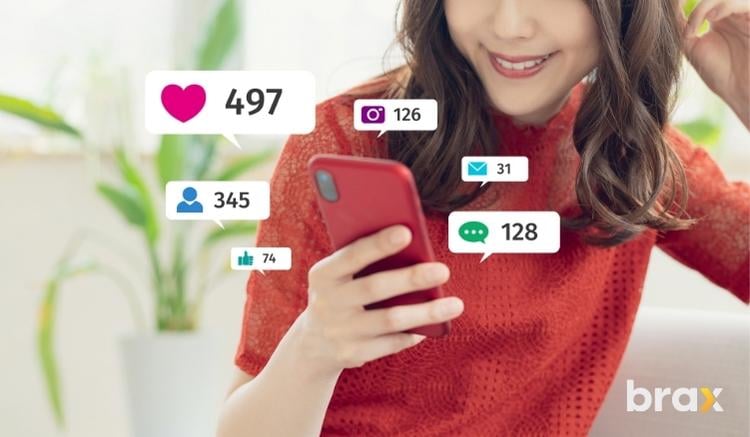
Influencer marketing wasn't always as rich as what we have today. At one point, only some dedicated bloggers and celebrities could do influencer marketing. But now, we've seen different influencer marketers pop up on social media and even saturate the market.
If you've looked up influencer marketing before, there's every chance that you found both positive and negative information about the niche. In truth, it's not easy to navigate the waters of influencer marketing, but that's why we're here to help.
In this article, we'll help you to make sense of influencer marketing and how it can benefit your brand.
Let's begin!
What is Influencer Marketing?
Influencers are like icons with a large audience base. So, working with such influential personalities would mean tapping into their large social media following.
Influencer marketing happens when a brand partners with an influencer to promote its products or services.
Brands can also work with opinion leaders to increase brand recognition. An influencer can be anyone and anywhere in the world. Every industry has its own set of influencers.
Right now, there are more than three million influencers around the world! There is no shortage of influencers at the moment, so you are sure to find one that fits your needs.
You can have a famous chef on Facebook use your brand of wok. Or you can leverage the power of a well-known digital marketer to promote your marketing tool on Linkedin.
Basically, any business can hire an influencer—all you have to do is find the right one for your brand.
Benefits of Utilizing Influencer Marketing
Influencer marketing has a great synergy with social media marketing.
Most influencers have followers on social media channels, and more than half of the world uses social media. Also, your brand can reach a larger audience that you can't reach with traditional advertising.
While most users equip themselves with ad blockers, and many have developed ad blindness, these same users might be more open to an influencer's recommendation.
Hence, influencer marketing is an essential piece in the period of ad immunity and social media marketing. But that's not the only thing your brand can benefit from Influencer marketing.
-
Not as Expensive as Other Marketing Strategies
One substantial benefit of using influencer marketing is its cost-effectiveness. While it may not permanently save your pockets (some influential personalities are pretty expensive), it doesn't require a constant cash influx.
For example, promoting your business with search engine marketing will require you to keep topping up your advertising account. If you don't, your ads will disappear, and users won't see them on search engine results.
When you properly plan your influencer marketing strategy, you'll get excellent results at a lower cost or cost that you can negotiate in the nearest future.
-
Increase Brand Awareness
One of the benefits of influencer marketing is boosting your audience's knowledge of your brand. The best part is that it's a reliable strategy, and it drives fantastic results most of the time. You'll promote your business to thousands, hundreds of thousands, or even millions of people.
But that's not all. Since these people care about recommendations from their opinion leaders, you'll be able to increase the positioning and outreach of your brand.

-
Generate Quality Leads
Influencer marketing works great in generating leads. And most of the time, these are high-quality leads. When people have favorite bloggers or content creators, they think positively of the brands those opinion leaders advertise.
Also, if your influencer makes content such as reviews, it can attract leads ready to convert into paying consumers.
-
Content Strategy Enrichment
Do you have a dead social media page?
Influencer marketing can help revitalize your content.
You have two options here; either you repost the content from your influencer's page (with the proper procedures), or you can motivate followers to make user-generated content.
If you're going to repost any of your influencer's posts, add it clearly to the contract so that it won't generate any copyright problems in the future.
Different Types of Social Media Influencers
The number of followers an influencer has determines what type of influencer that person is. Here are the different social media stars you can choose from, depending on your brand's needs and budget.
-
Nano-Influencers
Nano influencers don't have a lot of followers. But these kinds of people specialize in a specific niche in the local market. Although they have a small audience base, most people think of them as the most sincere and genuine of the influencer types.
These small-scale influencers have less than ten thousand followers on social networks. But with the right tools and strategy, these influencers can become ambassadors that drive steady leads and traffic to your brand.
-
Micro-Influencers
Influencers under this category offer a slightly larger audience base than nano influencers. Micro-influencers can also give your influencer marketing campaign a significant boost. They usually have a more engaging and loyal following from about ten thousand to a hundred thousand.
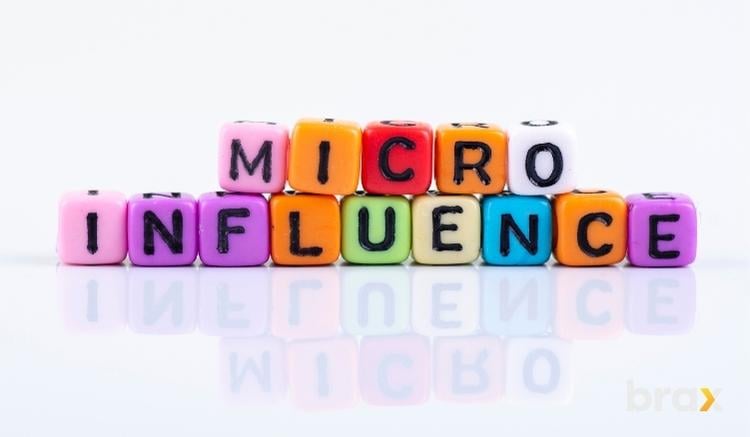
-
Mid-tier Influencers
These types of influencers are similar to micro-influencers. They also have a dedicated and engaging fanbase. These influencers have larger followings and have more experience as brand ambassadors.
-
Macro-Influencers
Influencers in this category have the second largest fan base reaching up to one million. These influencers include celebrities and people with a lot of influence and popularity outside social networks. You can also find other public personalities like politicians under this tier.
However, it can be hard to work with these influencers. Some may not show interest in influencer marketing, or they might be too expensive for small to medium businesses.
-
Mega-Influencers
Lastly, we have mega influencers. This tier is exclusive to celebrities and high-profile personalities. While it's tempting to contact these influencers, they are not the best options for influencer marketing.
If they agree to advertise your products, it would be at a rate more expensive than macro-influencers. However, there is a higher chance that they might not want to advertise because they earn enough already.
Furthermore, most mega influencers have a broad audience, which means while you spend a great deal on them, the return on investment may not be as high as with niched influencers.
Types of Influencer Marketing Campaigns
When it comes to influencer marketing, it's not enough that you create an ad (whether with an image or just plain text) and give it to your influencer marketing. There are different ways to go about this.
Influencer marketing has various campaign types, each with its specific purpose.
Let's look at some of these campaign types you can use when using influencer marketing.
Affiliate Influencer Marketing
Affiliate influencer marketing cancels out some stressful processes. It's an effortless method of generating leads, and it's cheap too. This campaign type also makes it easy to find influencers.
You don't have to go through a long list of influencers and negotiate prices. You just have to create an affiliate program on your website and wait for the results.
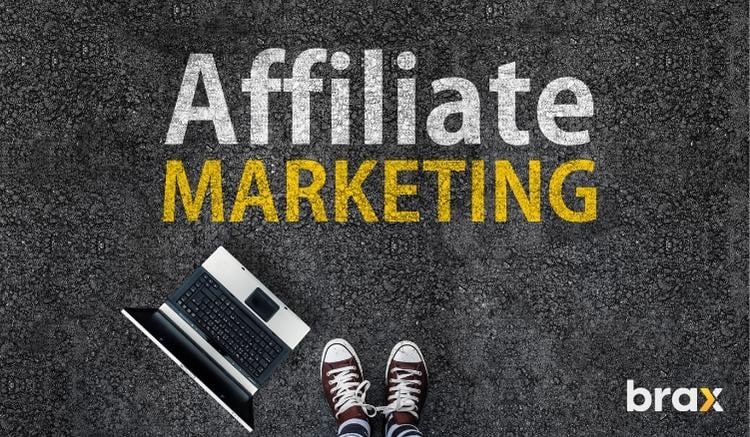
Unboxings Influencer Campaigns
Unboxing is more on the high-risk, high reward side. What you'll do here is send gifts to influencers and hope that they will open and review your gift on their social media page.
But, here's why it's risky. Some influencers may not review your products since they're not getting paid or obligated to do so. Also, these influencers might give a negative review, which can hurt your brand's reputation.
The risk also extends to the brands themselves. Some brands may go out of their way to impress influencers and not meet that standard for customers, causing severe backlash.
However, if you can work around these problems, Unboxing videos are highly influential, and it's way cheaper than paying advertising charges.
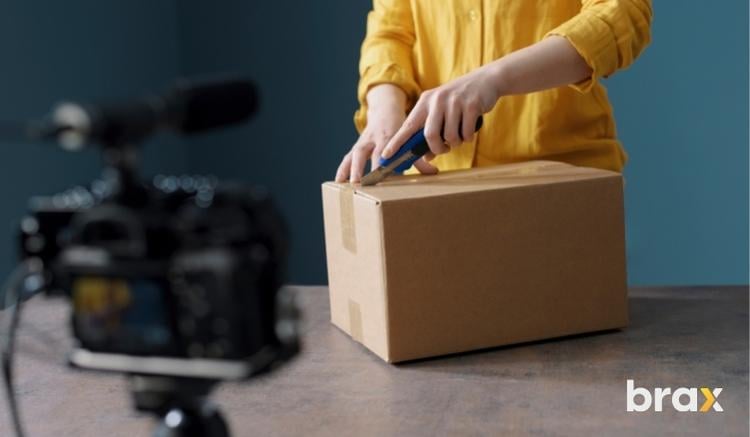
Social Media Takeover
Social media takeover is a different influencer campaign. Rather than pay influencers to market your brand, your influencer will take control of your social media account. Social media takeover is not for the faint-hearted, as you'll hand over control of your account to an influencer for a set period.
Some brands only allow social media takeovers for a day, while it's also possible to invite these influencers to stream content from your brand's account.
Brand Ambassador Programs
Sometimes, brands can have people who love them and promote them even without charges. Influencers are no different, and brands can offer them ambassador programs. It's a good strategy because influencers will always recommend the brands they love.
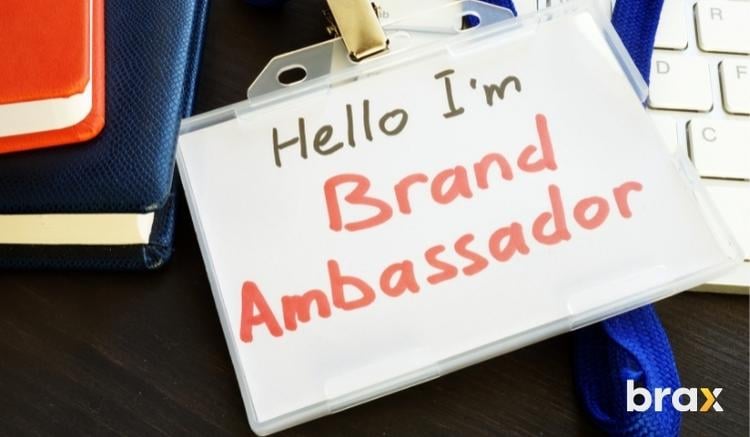
Sponsored Content
Sponsored content is similar to brand takeover, but in this case, the brands publish promotional posts on the influencer's account.
Brands can pay influencers to handle creating and posting content but only according to some set guidelines.
Sponsored content can also apply to other platforms and is not necessarily for individuals. This includes high-traffic publishing websites such as news sites, business sites, fashion sites, travel sites, and more.
Steps to Creating an Influencer Marketing Strategy
Now that you know the five common types of influencer marketing, it's time to learn how to create your influencer marketing strategy. Like any other marketing strategy, you need to plan and target appropriately.
Here are a few steps to help you create an effective influencer marketing campaign.
Step One: Defining Your Target Audience
You can't run any promotional campaign without knowing your target market. Luckily, there are various ways to find out what set of customers has the most potential.
There's the option of targeting people similar to your best customers, or you can survey your clients and find out their preferred influencers and social media networks.
But if you need a new audience, you'd have to do marketing research and build a target persona.

Some questions you should ask yourself include:
- Who are my targets? You'll define their basic demographics, pain points, social status, and other information about your prospects.
- Where are they in the marketing funnel? Marketing tools lie Ben Hunt's customer awareness ladder can help you determine this aspect.
- How do they behave? Check out the publications of big agencies and brands. Also, focus on influencer marketing, social media, and media consumption reports.
- What are they interested in? You can study your prospects' preferred audience to spot them easily.
You'll need all this data in your target persona. Don't forget that you'll keep making changes in the long run, so keep your mind open.
In addition, defining why users search for your products and why they use them would help you offer solutions they need with your influencer marketing campaign.
Step Two: Finding The Right Influencers and Negotiating the Costs
First, you need to decide what platform to focus your marketing efforts on.
Don't try to run multiple social media accounts at once with influencer marketing, especially if your brand is relatively new. You can continually expand your reach on other social media platforms later.
However, you must meet two conditions: either you're looking to expand into the social network, or you already have a brand presence there. If you're unsure what platform to choose, you can try social listening.
Social listening lets you find out where most people talk about your industry. You can also find influential personalities related to your industry.
Take note of your industry when creating an influencer marketing strategy. While fashion and cooking brands work best on Youtube and Instagram, video-game brands are more prominent on twitch.
When searching for influencers, always have an idea of the kind of influencer you want and let that guide your budget. You may want a nano influencer with less than ten thousand followers or a mega influencer with over a million. But always go for what you can handle before making any purchase decisions.
Step Three: Set Your Goals and KPIs
Like other strategies, you can use influencer marketing to achieve different goals. What you'll do here is set your objectives. However, you'll need to state them clearly as your tactics will depend on these objectives.
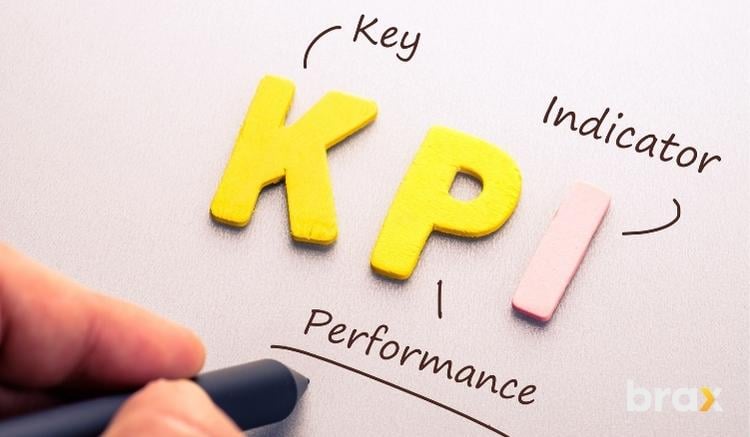
While setting your goals, you should also set your KPIs (Key Performance Indicators) to know if you've achieved your goals or not.
Here are some KPIs you can set if your campaign objective is brand awareness:
- Total engagement rate
- Search Interest
- Total outreach
- Media mentions
- Amount of traffic on your website
If your objectives are sales or other user actions, you'll set your indicators like below:
- the number of registrations
- email signups
- purchases
- app downloads
Also, try setting one goal for any piece of content.
Setting several goals for the same content would generate multiple CTAs, negatively confusing your prospects and affecting your conversion rates.
Step Four: Set up Your Budget and Management Strategy
Once you have your objectives and an idea of how much it would take to partner with your preferred influencer, it's time to plan your budget. Things you should add to your budget include time for planning, reviewing, and executing your influencer program.
Successful influencer strategies require careful planning and monitoring. It's not just something you set up and leave. Contrary to automated ad strategies, influencers are human and need a steady and strong business relationship.
Without such a relationship, it'll be hard to manage influencers. They might fall behind on schedules and use the wrong tags and CTAs. Hence, establishing a more hands-on relationship to manage them and let them know what works and doesn't work in your niche.
Step Five: Pick the Right Channel
Some marketers believe that some social networks offer less or more value for influencer marketing. But just because many marketers believe that Instagram is the best for influencer marketing doesn't mean it'll work for you.
You should pick a platform based on your audience's interests, goals, and the opportunities each network provides for your niche. For example, food and nutrition brands may benefit from Instagram, while content marketing businesses would be more tuned to LinkedIn.
While studying statistics is one way to pinpoint the perfect channel, testing is more effective. You can select different social networks you feel your prospects use and run low-cost but effective campaigns. Then, let the results show you the best option for your brand.
Step Six: Contacting Influencers
So what if you know the type of influential profiles you want and you've set everything? How do you identify influencers for your business? What you need is more research.
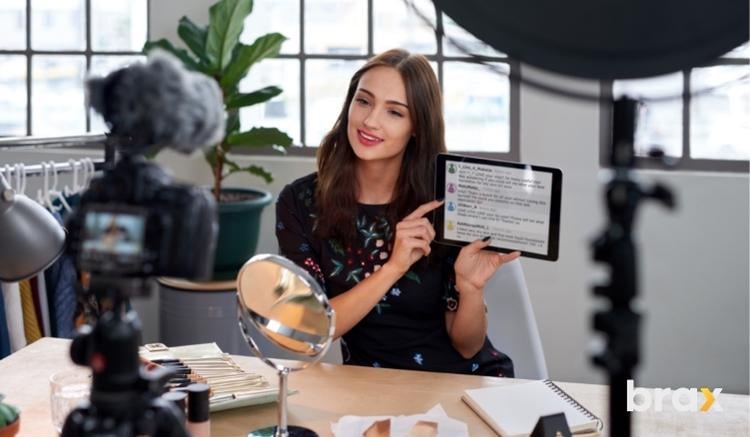
Here are some factors to consider when doing your research:
- Are your target influencers legit? You can scroll through their feed and click some posts. If they have poor engagement rates and comments that feel like spam, it's probably a fraudulent influencer.
- Does the influencer content resonate with your brand? If you're a cosmetic brand and want to market a new product line, you should target influencers that post regularly about cosmetic products and even makeup sessions.
- Has your prospective influencer partnered with similar brands? Depending on the type of influencers you're targeting, one with experience would present a press kit that includes their portfolio.
You can also use an influencer marketing hub to find opinion leaders that would fit your brand's campaigns.
Once you find the perfect influencer, the next step would be to contact them for business. If you're dealing with the nano tier, you can send a direct message to make inquiries.
If you're dealing with more established opinion leaders, check their profiles for any contact information in their bio. If you find such information, you can contact them and make your inquiries. Some may even provide links to an external website for signing brand partnerships.
Step Seven: Incorporate Tracking Systems
In this digital age, you can track almost anything with the help of a single click on your website or landing pages. Being able to track your influencer marketing campaigns can help you accurately evaluate the performance of this strategy.
One of the best ways to track this marketing strategy is by providing influencers with a unique tracking link. You can get this tracking link by setting up landing pages using a tracking tool and giving this link to your influencer.
Every time a user visits the landing page using this link, the tracking tool sends the information back to your tracker.
You can also utilize Google Analytics. With this tool, you won't even need a unique tracking link. However, to be more accurate with your tracking, you should provide each influencer with a unique landing page.
Every time a user arrives at this landing page, you know that it is from the influence of your influencer.
Step Eight: Review and Modify Your Strategy
Always set up schedules where you check the progress of your campaigns, even if your campaign is up and running.
Ensure you track your results and make modifications to your campaigns where necessary. Remember that not all campaigns you make will be successful, but you can learn with each campaign.
Evaluate the results based on the goals you initially set and improve your strategy as necessary.
Examples of Successful Influencer Marketing Strategies
Now that you understand how Influencer Marketing works (in theory), it's time to check whether it is really something worth trying out.
Let's look at a few examples of brands that created successful influencer strategies that captivated the audience.
Nike x "What's Inside?"
Nike took a creative route with its influencer marketing campaign. The brand partnered with the "What’s Inside?” Youtube channel to market its Air VaporMax collection.
Interestingly, Nike and the “What’s Inside?” channel made different sponsored videos, including an unboxing video, branded content with the Air VaporMax in a frame, and the main promotional video. The main video shows a sliced open pair of Air VaporMax. While it sounds off that Nike would willingly destroy its products, it did work in the brand’s favor.
This different approach allows Nike’s influence to show all the features and benefits of the shoe and even showcase every aspect of the branded shoes. The video also entertained viewers since it wasn’t different from the “What’s Inside?” channel’s regular content.
BECCA Cosmetics x Different Social Media Stars
Over the years, BECCA cosmetics successfully created influencer strategies by working with influencers from different platforms. Some time ago, the brand promoted a cosmetic collection with the help of Chrissy Teigen.
The promotional video gained almost five million views. Such results motivated the brand to build even better influencer strategies. Two years ago, BECCA cosmetics partnered with Barbie Ferreira, a social media influencer with over two million followers.
With the help of the influencer, the brand was able to promote its Prismatica cosmetics collection. Both BECCA cosmetics and its influencer consistently and repeatedly promoted the product line and even engaged in cross-promoting.
The tactic was simple yet effective. While BECCA cosmetics showcased the product on their business page, Barbie would show what the product looked like on her face.
Turkish Airlines x Jerome Jarre
Turkish Airlines offer a perfect example of riding the waves or going with the flow. The company’s influencer marketing was not on purpose.
When Snapchat influencer Jerome Jarre noticed that Turkish Airlines were the only airline accepting flights to Somalia during the humanitarian crisis, he created a movement.
Now the name of the campaign was #TurkishAirlinesHelpSomalia, and it quickly caught the attention of many celebrities. In truth, the campaign’s goal was to generate funds for Somalia, and the influencer reached that goal in twenty-four hours.
Although Turkish Airlines didn’t know about the initiative, they quickly caught the opportunity to increase their brand awareness and reputation. The company even sent different resources to Somalia and promised to support the country for six months–and it worked out great for Turkish Airlines.
Baggit x Bloggers
Baggit is an Indian bag provider that uses influencer marketing platforms to build interaction and engage with its audience. Baggit used a different influencer marketing tactic in the form of an event.
The Baggit event allowed influencers to showcase the brand’s product by holding it throughout the event. This strategy aimed to promote the story behind their bag collection. The bloggers participating in the event got questions like why they chose the bag from Baggit and if they would exchange the bag with others if given the opportunity.
The brand attracted the interest of an audience with a set of Mumbai bloggers on Twitter. Baggit also shares the tweets of its bloggers using the #PlayThe LifeGame.
Tips For Creating a Succesful Influencer Marketing Strategy
There’s no marketing strategy in business that’s safe from failure and things going wrong. However, you can reduce your chances of making mistakes that could spell doom for your brand. With that said, here are a few tips to help you minimize the risk.
-
Focus on Engagement Rates, Not Follower Count
Nowadays, it’s easy to create fraudulent accounts with fake followers and low engagement rates. Hence, it’s not a good tactic to base your influencer marketing strategy on the number of followers an influencer has.
Before partnering with any opinion leader, check the statistics on that influencer’s page. You should look out for indicators like the number of views, likes, and comments. These show the level of engagement an influencer has.
Note: One-word comments and emoji-only comments are big red flags. You should avoid such accounts.
-
Shift Your Attention to Video Makers
Videos never seem to stop growing, and it continues to take over the world of social media. However, we’re not talking about traditional video advertising.
Such ads are intrusive and tend to irritate viewers. Also, Ad blockers are a thing now, so switching to opinion leaders that create videos would be a great strategy.
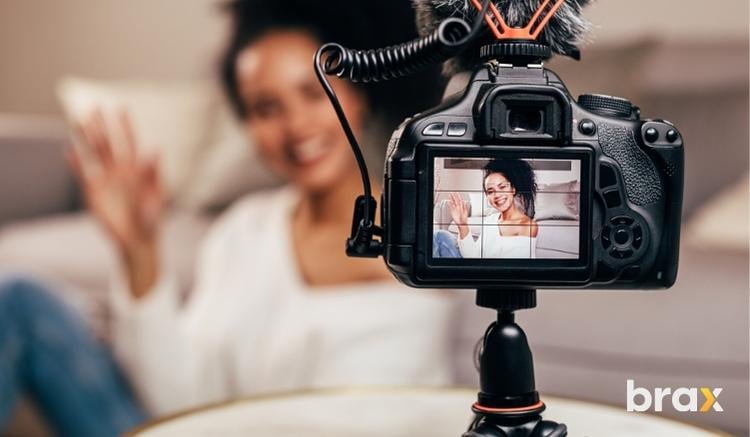
-
Small is Never Bad
Most marketers think influencer marketing involves promoting through macro and mega figures. But the truth is accessing such accounts is almost impossible, and brands that partner with them spend a lot of money.
One other problem with a large follower count is poor engagement rates. Hence, you shouldn’t underestimate the power of nano and micro-influencers.
These opinion leaders usually have higher engagement rates and are more sincere in business. So, never think small is terrible for your brand.
-
Focus on Long-term Relationships
It’s not advisable to continually work with one opinion leader. Instead, it would be more effective if you worked with different opinion leaders. But trying to accommodate many social media stars can also be bad for business.
So you can go with building long-term relationships with a fewer set of opinion leaders. If you’re consistent and work with them repeatedly, you’ll mostly get good results.
-
Give Your Influencers Breathing Space
Always allow your influencers to work freely while partnering with them. You should create particular rules to guide their content creation process but never control it.
Many Influencers need a certain level of creative freedom to create compelling content, so avoid breathing down their neck as much as possible.
-
Don’t Ignore Cross-Platform Promotion
If you have an online Instagram business page, you’d most likely find an Instagram influencer with highly engaging Instagram posts. While it’s not wrong, cross-platforming can be even more effective.
Your influential figures can make TikTok videos and share them on Facebook, Instagram or other networks to reach potential customers outside of Instagram.
They can also make sponsored posts that you can share on different platforms with the proper permissions. Hence, cross-platforming would take your campaigns beyond Instagram users and reach out to other networks.
Final Words
While influencers are here to stay, the world of influencer marketing has gone through many changes that make it what it is today.
This guide on what is influencer marketing will show you how to create your strategy, but you need to be open to change. If you want to increase sales and ROI, you’d need to follow the trends and be dynamic.
While it's great to partner with an influencer on one platform, don't be afraid to check other options when you have enough brand presence on the previous social platform.
There are also some things to consider before partnering with the right opinion leaders. And for the most part, you only need to do some marketing research to set up your influencer marketing campaign.
What do you think about Influencer marketing? If you’re not using it yet, we hope this article gives you what you need to get started.
Need help with marketing? Send our team a message! Our team of experts can help you with your online marketing needs.
If you liked this article, you might also like these marketing articles:
- TikTok Influencer Marketing: How Brands Succeed with TikTok Creators
- Using the Theory of Loss Aversion in Marketing To Gain More Customers
- The Fabled Art of Storytelling in Marketing: the Definitive Guide
- How to Use Experiential Marketing for Customer Acquisition
- Niche Marketing: Earn Big by Targeting Small

